LEVEL DESIGN - GAMEPLAY DESIGN - EFFECTS - 3D MODELLING - TEXTURING - ANIMATION
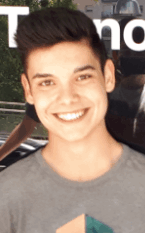
LEVEL DESIGN - GAMEPLAY DESIGN - EFFECTS - 3D MODELLING - TEXTURING - ANIMATION

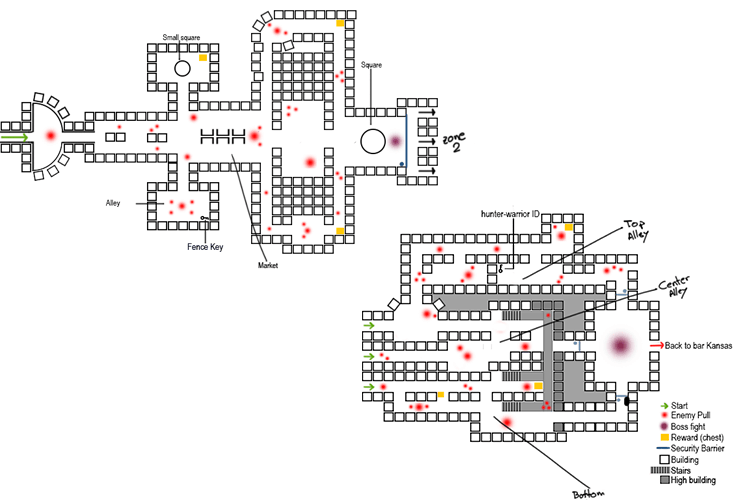
Our first dungeon happens on the streets of Scrapyard.
The main idea was to create a level that situates and puts the player in context, that represents the city of Scrapyard, an iconic element of the Gunnm's universe, in a way that is recognizable to the naked eye by someone who knows it.
Following Ido, we visit two different areas: a main avenue, with wider spaces, squares of different sizes, wide market streets, etc; and a second area of tight alleys, more labyrinth.
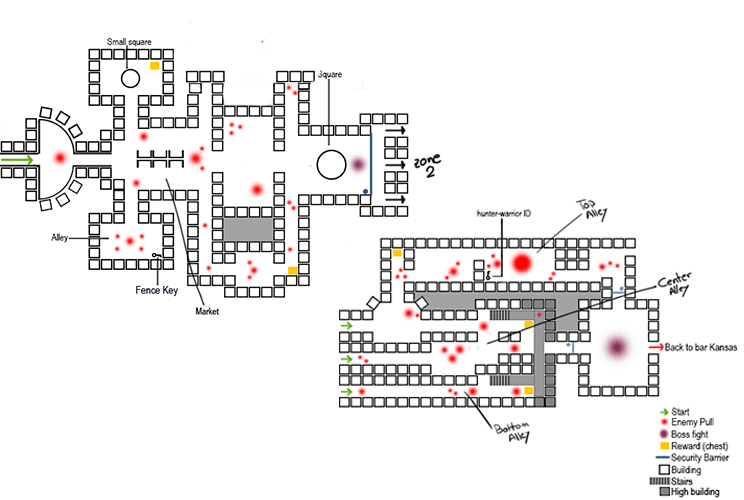
The first approach was way too big.
It was difficult to make a nice pacing for the level, keeping it all interesting, even dividing the map into 2 zones.
Also, we had performance problems, so we decided to make the level smaller.
I maintained the structure of the streets, as well as their visual appearance, removing the parts that were less interesting or moving their elements to other areas closer to each other.
Unity Mockups.
Before starting to build the level in our engine, I made the mockups of each zone in Unity, in order to test things like the size of the buildings (for the artists to make the props), the needed time to go from the beginning to the end of the map, the width and length of the streets, etc.
I repeated this process when we decided to make it smaller.



Warrior Blood
In the first level, we experience the events that occurred in the first arc of Gunnm.
Alita, still very confused about her identity, suspects that Ido is a murderer, so she follows him at night until she discovers that he is a hunter-warrior and gets involved in a dangerous fight in which she discovers her abilities as a fighter. The resurrection of a berserk.
At first, I tried to represent these events through images from the manga, popping out at certain moments. However, I was not happy with the result, the gameplay and the images were perceived as two different things even though they were well synchronized.
The images stopped too much the rhythm of the game, and the game took the player out of the story he was watching and reading.
Having these problems, I decided to remove the images and explain the story through events found on the map, like a suspicious pool of blood on the ground, Netmans you can interact with, the corpse of another hunter-warrior...
Besides that, to reinforce the pursuit of Ido and guide the player at the beginning of each zone of the level, I chose to use a small cutscene system (implemented by Óscar Hernández) that moves the camera to focus Ido on his way.
The main idea was to find a balance between combat, exploration, and events, to create a nice game flow through all the level.
Giving pauses that allow the players to relax and maybe change their equipment or check their objectives, and intense fights which push their abilities and to the limits.
There are some elements to force this pacing, like triggered events, enemy locked zones, chests to find, etc; but it is mainly a combination of all the elements placed after tons of testing and iteration.
The first idea was to have a boss on each level, but we had to remove the first one, so the pacing of the level was a bit affected at the end.
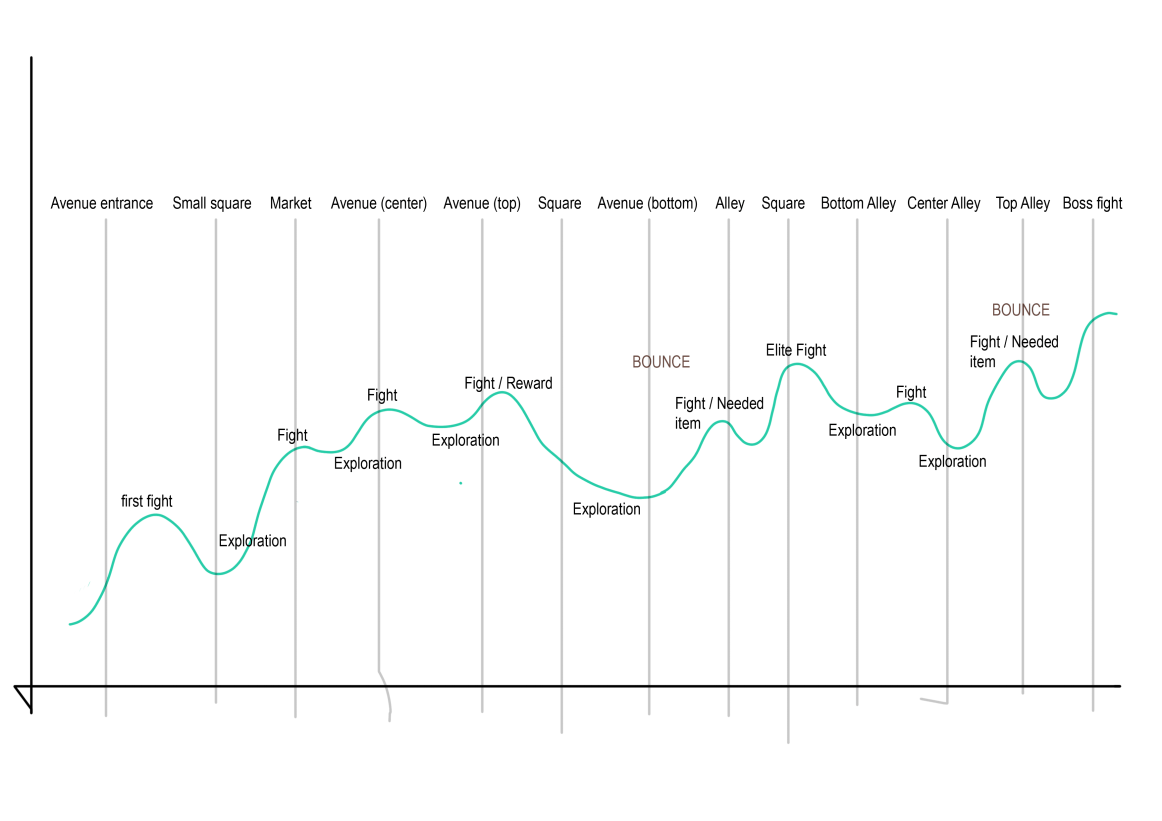
Once the concept was done and approved, it was time to build the level in our engine.
I made a list of the props needed for the art team (David Lozano, Víctor Masó and Ricardo Gutiérrez) with their advice, and then place them following the concept.
Since the level is large, Alfonso Sánchez and Alex Campamar helped me with some of them. Also, I placed the environment particles, like fire and steam, made by Ricardo Gutiérrez.
We needed cube colliders on every prop so the first version of the navmesh and some elements of the combat system will work properly, so I also placed them every time we needed to re-bake the navmesh.
Everything about the level has had changes at some point of the development of the game, although it has maintained the same foundations. The lighting of the scene is probably what has suffered them the most.
Since I was inexperienced on doing light schemes, the first approach lacked dynamism. It was just a different light color for the first and second zone, to reinforce the wider and lively streets appearance of the first zone and the dark alleys aspect of the second one.
I did tons of iterations and tried a lot of different schemes, each time with improvements respect the previous one. The final result was a much more dynamic lighting, having new props and using different colors and behaviors for the lights (with a behavior system made by Guillem Costa), depending on their source prop. It kept the same base of having a different lightning for each zone and became a level more visually faithful to the city of Scrapyard.
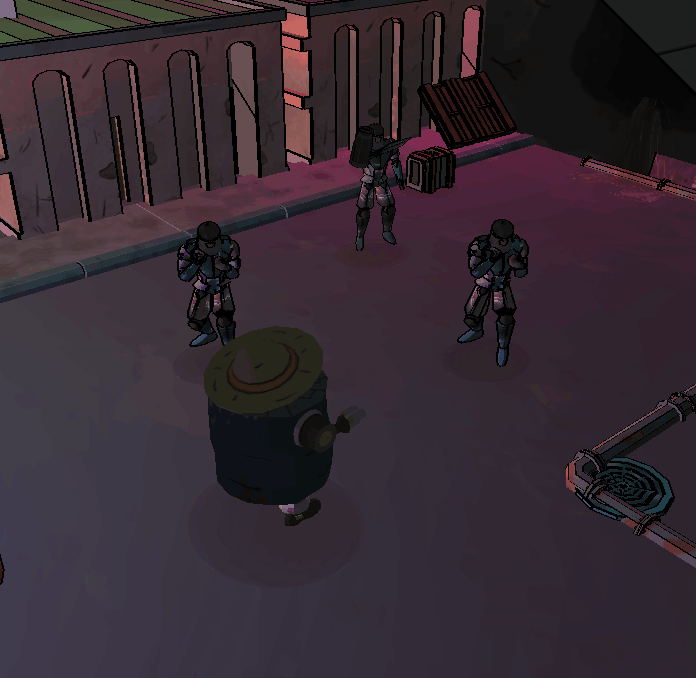
Having a good flow during the level and matching it to the pacing you thought of, requires a lot of iteration and test where and how you put the enemies. The approach I did on the concept phase was completely wrong, so I needed to try and ask for feedback constantly to put them right.
I worked on the design and the implementation of the effects of two abilities; the cone kick and the buff ability, whose logic was implemented by Guillem Costa.
The effects for the cone kick were the animation, a trail and the decal, which was a little different than the jump kick (Q) because it had to stay on the ground while the animation was running so that the player knew at all times where it was going to hurt. Besides, I had to change its texture to reinforce the moment of the hit.
The buff ability needed two particles, the first one when you activate it, and other ones in a cone burst to show where it does damage. The particles were made by Ricardo Gutiérrez.
On the last stages of development, I was in charge of balancing all the abilities. It took a long time of testing to get the damages, areas, cooldowns, etc, at a suitable and fair point. Especially the jump kick (Q), which, in the beginning, the player could spam a lot and had a small area.
I thought it would be better if we kept the cone kick as the spammable ability and change the Q values to have a bigger area, more damage, and a lot of cooldowns.
Besides this, I helped Alex Campamar with the balance of the stats of Alita. At first, it was completely unbalanced. The game started pretty hard without any level, items, or abilities, and it became easier and easier, which was the opposite of what we wanted. We had to reduce the multiplier when the player upgrades a stat and increases the starting values of them.
